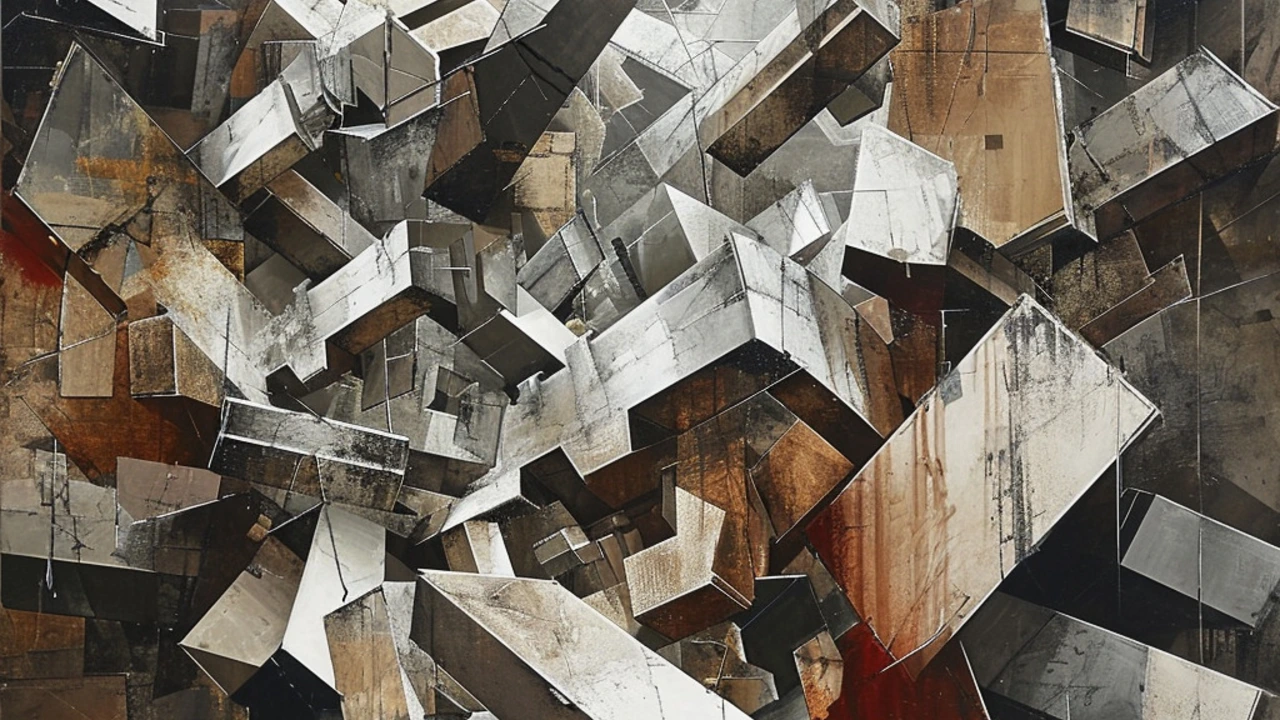Revolutionizing Architecture: The Role of Deconstructivism
 Aug, 2 2023
Aug, 2 2023
Unraveling the Intricacies of Deconstructivism
Just as my beloved Siamese cat, Snowball, takes great pleasure in batting apart a ball of yarn, deconstructivism in architecture similarly enjoys pulling apart structures and norms we've held dear. It is interesting to me that while Snowball blissfully reels and pounces on the stray threads, the process in which she deconstructs her toy mirrors what architects in deconstructivism have been doing all along. Deconstructivism is a movement in postmodern architecture that began in the late 1980s. It is characterized by fragmentation, an interest in manipulating ideas of a structure's surface or skin, asymmetry, and the manipulation of a structure's form and surface.
The Advent of Deconstructivism: Defying Conventional Norms
Remember that time you took the path less traveled, determined to carve out your own niche rather than following traditional routes? If you do, then you’ve embraced the spirit of deconstructivism! What a pleasant and efficient way to build a connection to the topic, isn't it? Deconstructivism emerged in the late 20th century, pushing architectural boundaries and daring to defy convention. This architectural philosophy glorifies the chaotic, appreciating the beauty in the imperfect and the asymmetric. I recall an incident from my own childhood when I was building a sandcastle at the beach. Without realising, my castle was far from being symmetric but delightfully chaotic. Even then, it had an endearing beauty to it. Who knew I was practicing deconstructivism as a child at the seaside!
Identifying the Unseen Influence of Deconstructivism in Our Lives
Just like you might catch sight of Snowball from the corner of your eye, stealthy yet irresistible in her charm, the impact of deconstructivism is subtle yet powerful. Across the world, structures that clearly portray the intertwining threads of complexity and irregularity, characteristic of deconstructivist architecture, have been moulding the landscape of cities. They spark fascination, but also dramatically alter how we perceive and interpret our surroundings. Or to put it simply, these peculiar looking buildings knock our socks off whilst reshaping our perspective.
Spotting the Marks of Deconstructivism
When observing buildings, a touch of intrigue can play out like a thrilling hide and seek game with Snowball. Similarly, identifying tenets of deconstructivism in a structure speaks to that sense of fascinating discovery. Fragmentation and disorder are hallmarks of the deconstructivist style. However, it is not about senseless annihilation but about calculated chaos. It's about the intent to create something strikingly different, yet equally harmonic. Like a jigsaw puzzle, the bits and pieces create something profound and beautiful.
The Pioneers of the Movement: Setting the Stage
When we think of pioneers, it's often in terms of brave explorers or innovative inventors. Well, the pioneers of deconstructivism are no different, they simply had a different landscape - architecture. Icons like Zaha Hadid, Frank Gehry, and Peter Eisenman stretched the confines of conventional architecture to introduce a new way of thinking and seeing. In a way, I admire their courage, just as I admire Snowball's fearlessness in leaping from great heights (which usually end with me having a mini heart-attack).
The Influence and Impact of Deconstructivism on Today’s Architecture
Deconstructivism, much akin to my evening gardening sessions in the yard in Adelaide, gently (and sometimes not so gently) moves, reshapes, and molds. The shift can be subtle yet deeply transformative, as has been the case with architectural design. Even in Adelaide, deconstructivism's influence can be seen in contemporary architecture, with buildings embracing asymmetry and breaking away from rigid forms. It reminds me too of Snowball, who on some days confounds me with her grace, yet on others is the epitome of stunning chaos. The world echoed this duality through the medium of architecture, thereby creating spectacles that leave an everlasting impression.
Revolutionizing the Future: Deconstructivism Leading the Way
Looking forward, just like in my musings about Snowball’s upcoming adventures (which usually comprise chasing shadows at midnight), the potential of deconstructivism in continuing to revolutionize our architectural outlook seems potent. Architects now have the freedom and the agency to defy conventional architectural norms. In its own unique and ever-evolving way, deconstructivism has defied the traditional rules of architecture. Its ability to combine the tangible with the abstract will indeed shape how we understand and interact with our structural environment in the future. Who knows, Snowball might get her own deconstructivist cat tower someday! Wouldn't that be something?